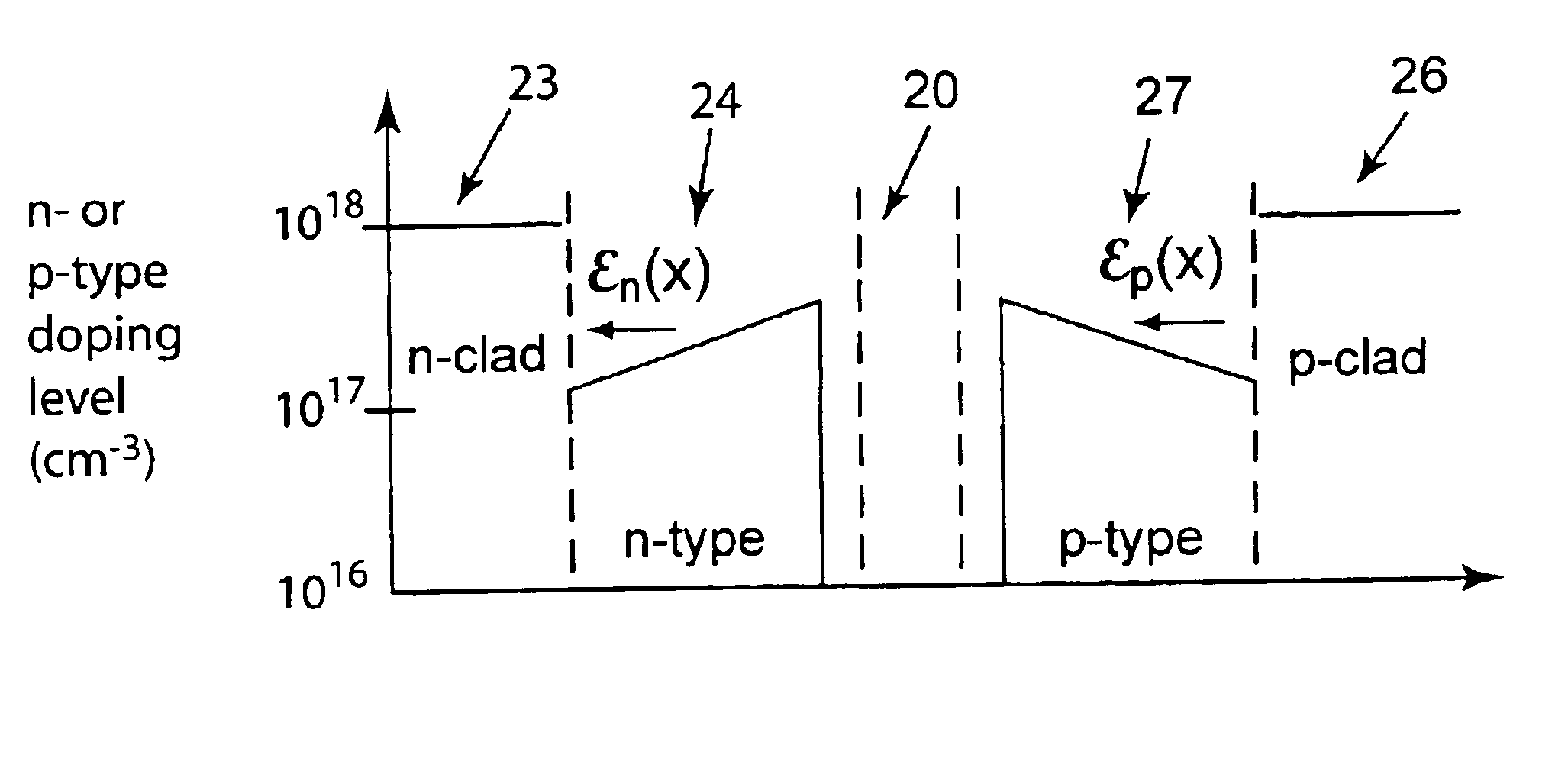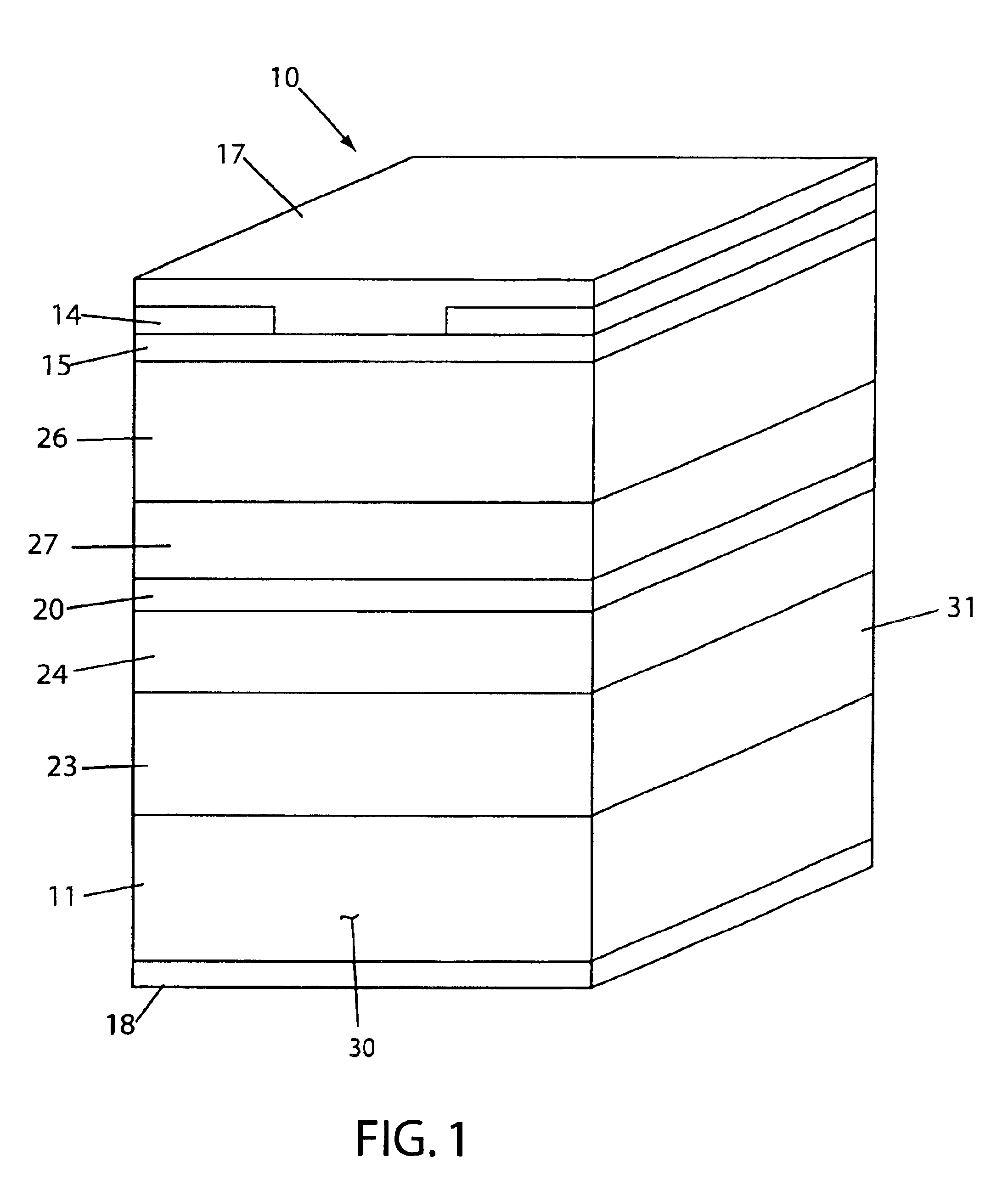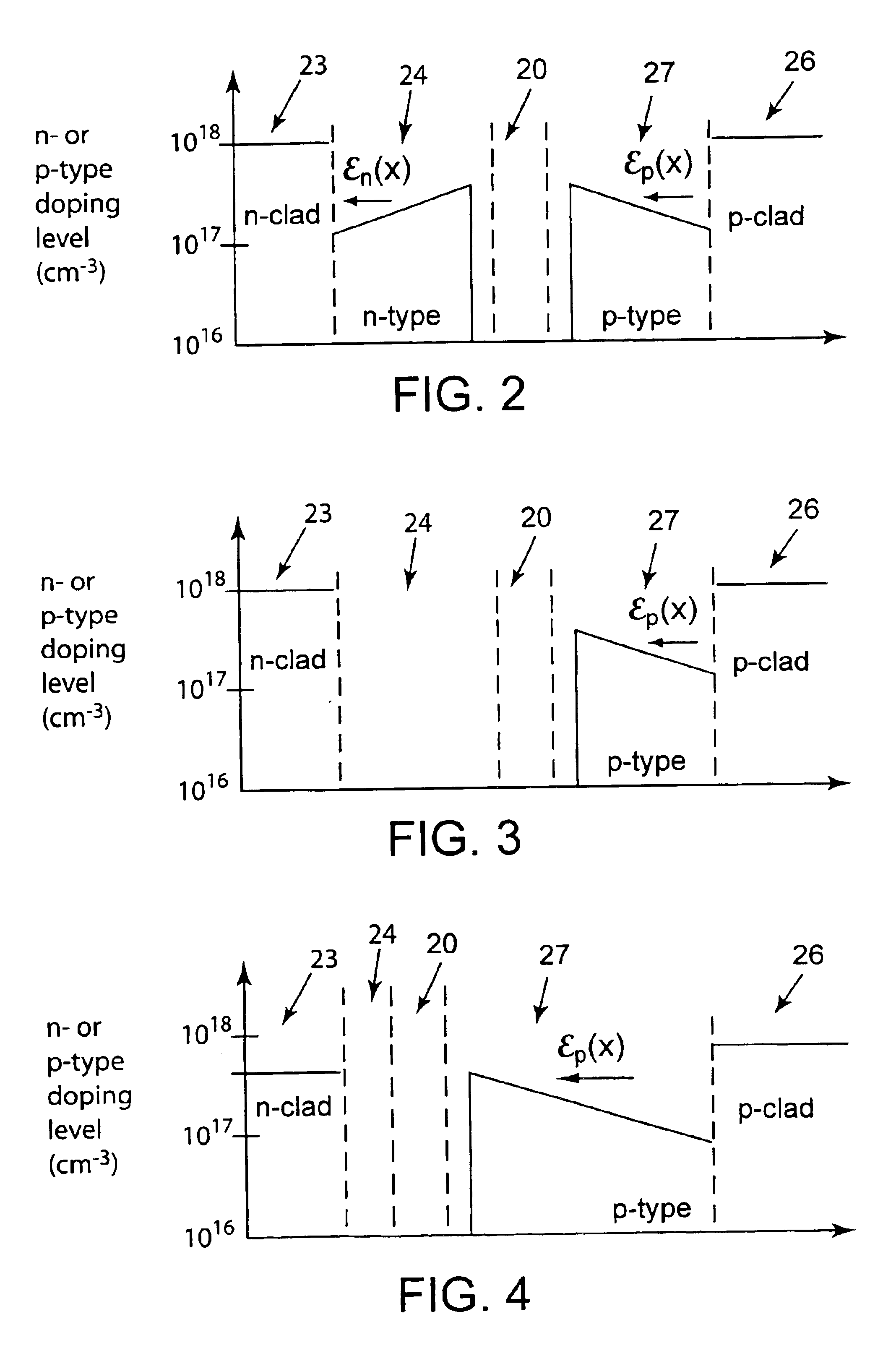Semiconductor light sources with doping gradients in optical confinement layers for improved device efficiency
a technology of semiconductor diodes and light sources, applied in semiconductor lasers, laser cooling arrangements, laser details, etc., can solve the problems of difficult to make single frequency lasers of the dfb type, limited dfb lasers designed to operate at shorter wavelengths, and suffer dbr devices, etc., to achieve high-efficiency conversion of electrical power into light energy
- Summary
- Abstract
- Description
- Claims
- Application Information
AI Technical Summary
Benefits of technology
Problems solved by technology
Method used
Image
Examples
Embodiment Construction
[0020]With reference to the drawings, a simplified view of a semiconductor laser incorporating the light source of the invention is shown generally at 10 in FIG. 1. It is understood that the exemplary semiconductor laser of FIG. 1 is provided for purposes of illustrating the invention and that the laser light source of the invention may be utilized in other laser structures or LEDs. The layers illustrated in FIG. 1 are epitaxially grown on a (preferably) GaAs substrate 11. The top surface of the substrate may be the (100) surface and the epitaxial layers may be grown on the surface exactly on orientation. Current confinement may be provided in various manners. For purposes of illustration only, current confinement can be provided as in FIG. 1 by defining the emitting aperture by insulating layers 14 (e.g., of SiO2) over a cap layer 15 of p+GaAs, with a top metal electrode 17 in contact with the cap layer at the top face between the insulating layer 14 to provide electrical conductio...
PUM
 Login to View More
Login to View More Abstract
Description
Claims
Application Information
 Login to View More
Login to View More - R&D
- Intellectual Property
- Life Sciences
- Materials
- Tech Scout
- Unparalleled Data Quality
- Higher Quality Content
- 60% Fewer Hallucinations
Browse by: Latest US Patents, China's latest patents, Technical Efficacy Thesaurus, Application Domain, Technology Topic, Popular Technical Reports.
© 2025 PatSnap. All rights reserved.Legal|Privacy policy|Modern Slavery Act Transparency Statement|Sitemap|About US| Contact US: help@patsnap.com



